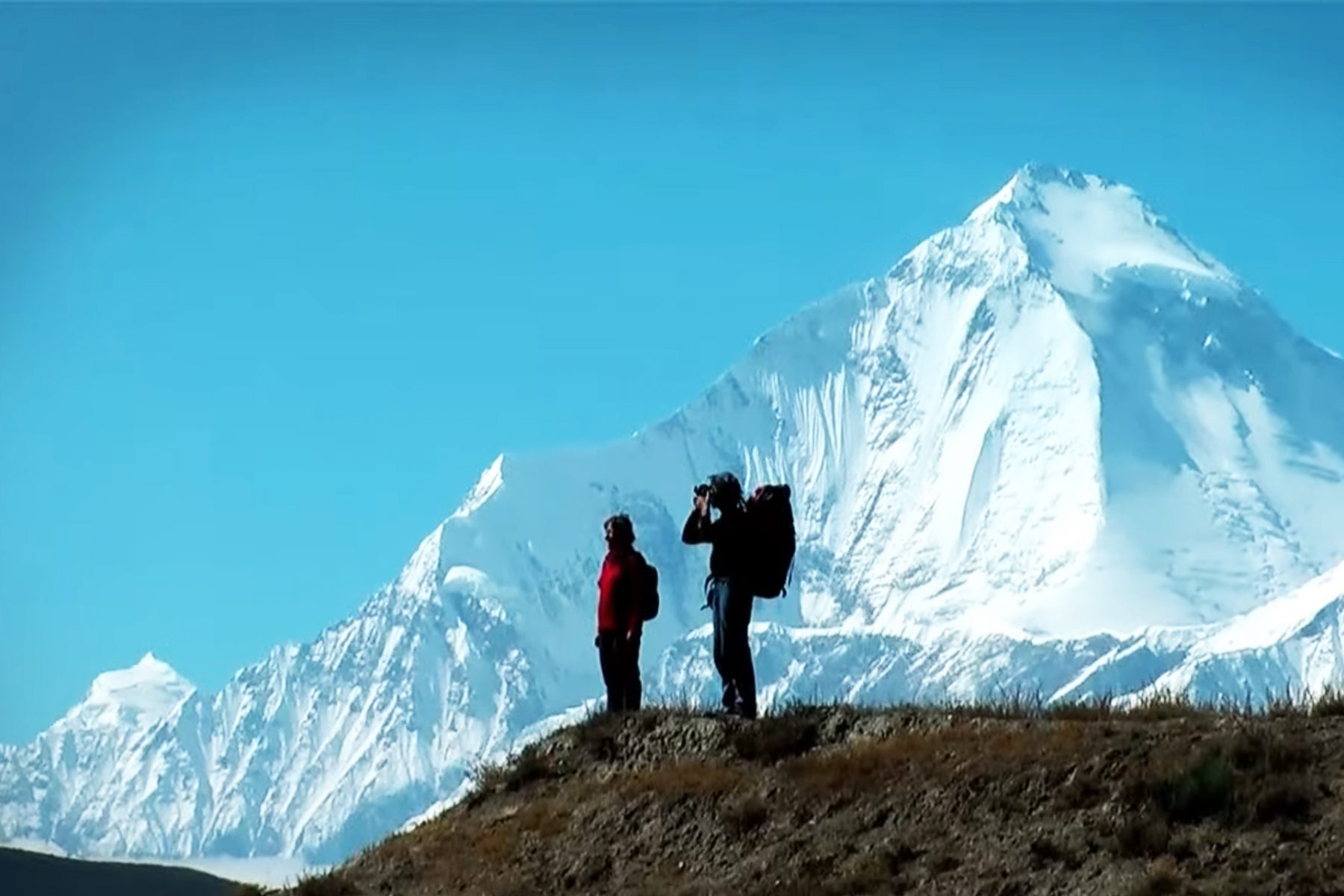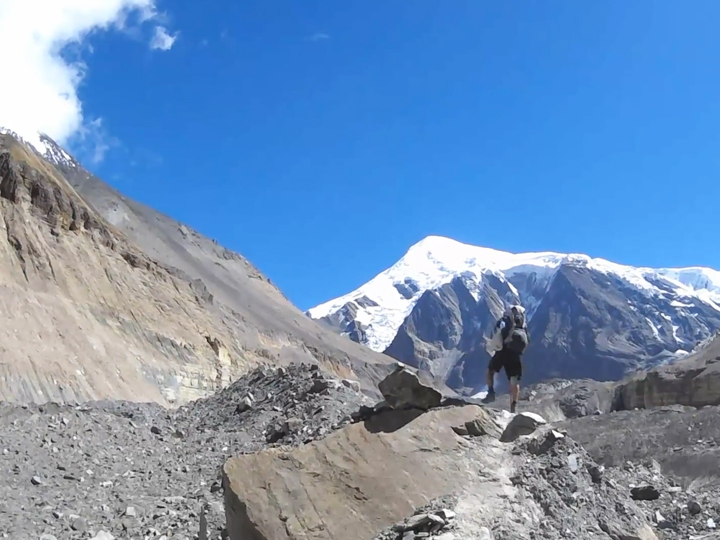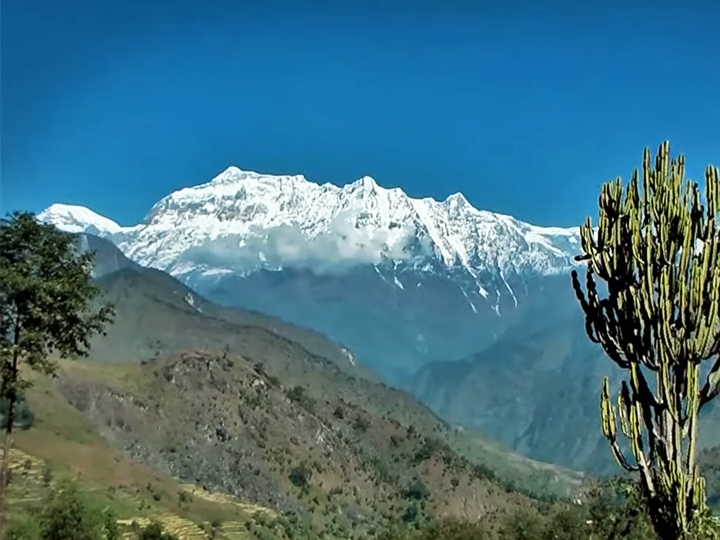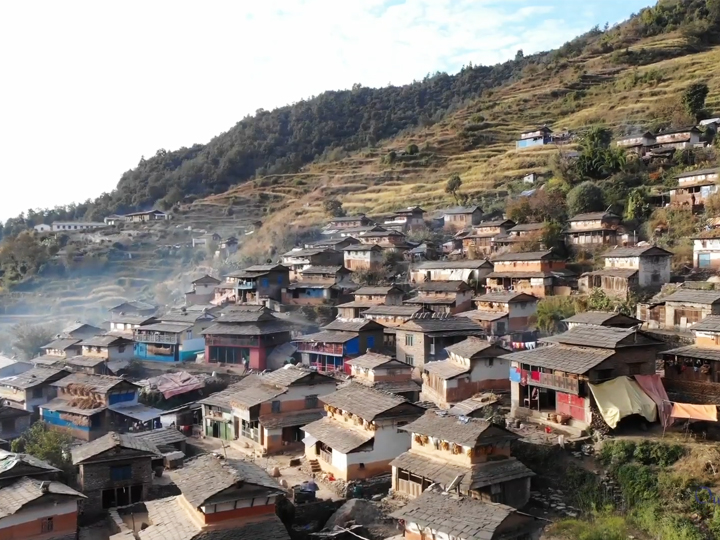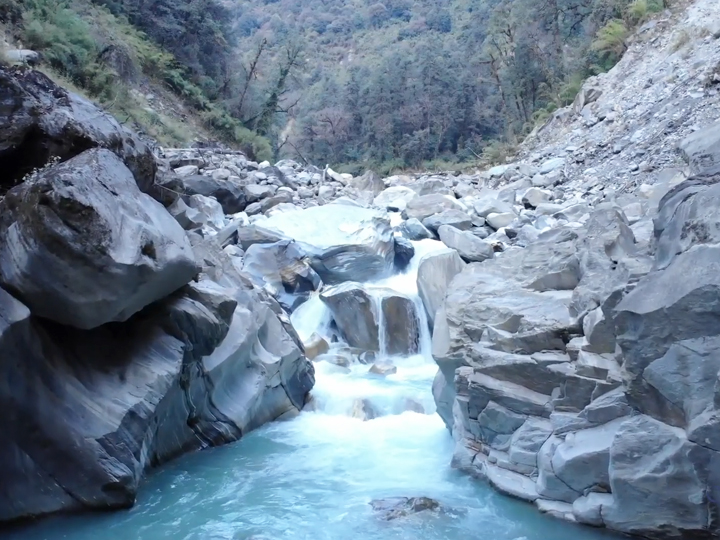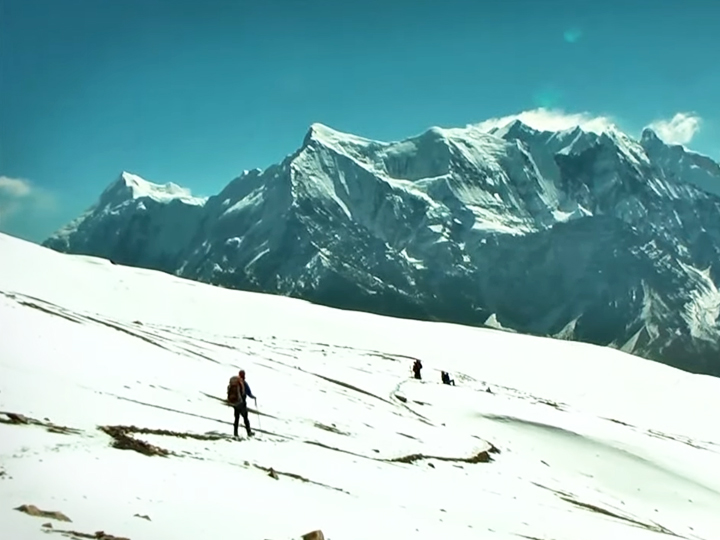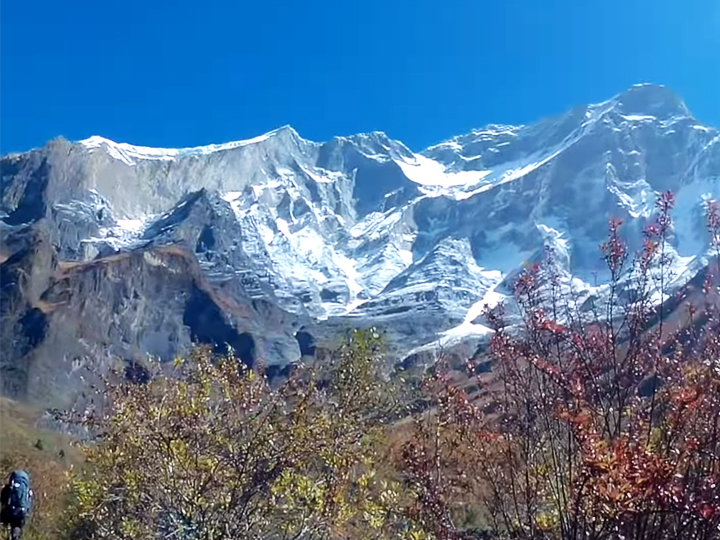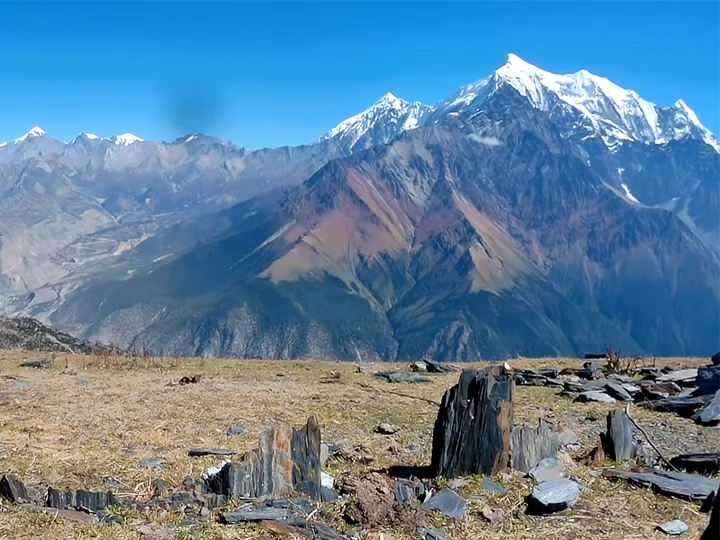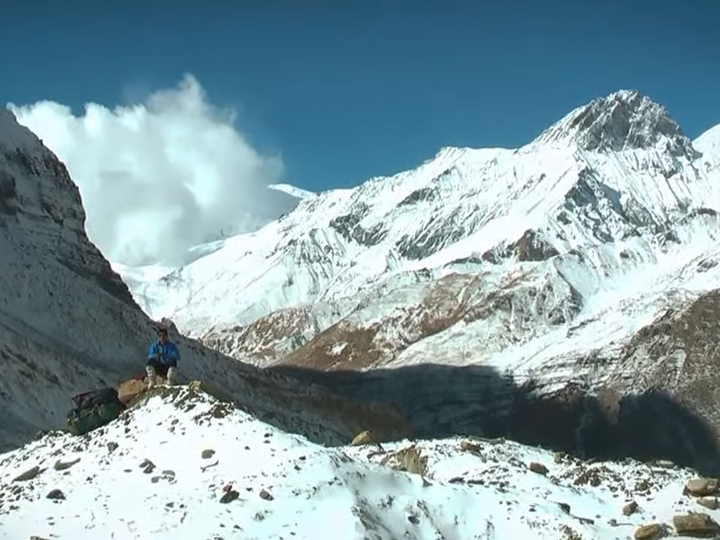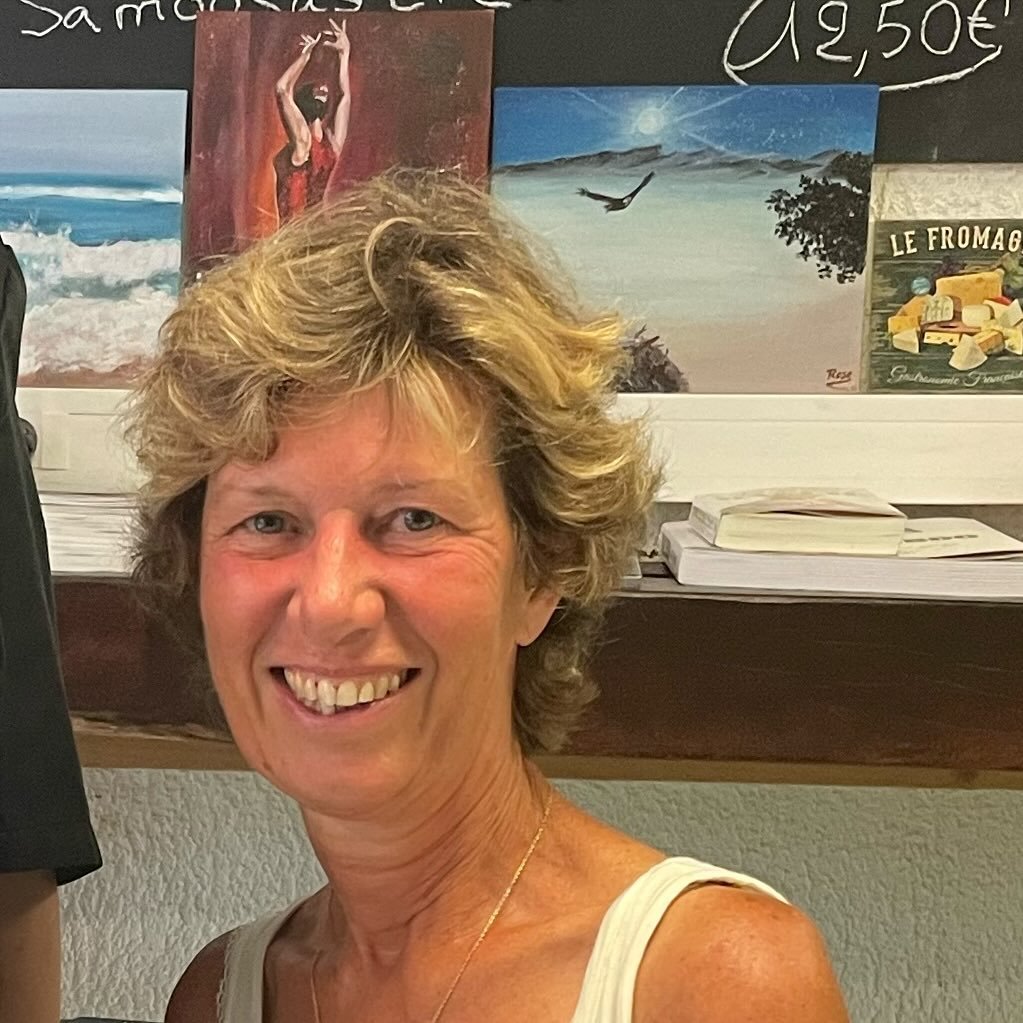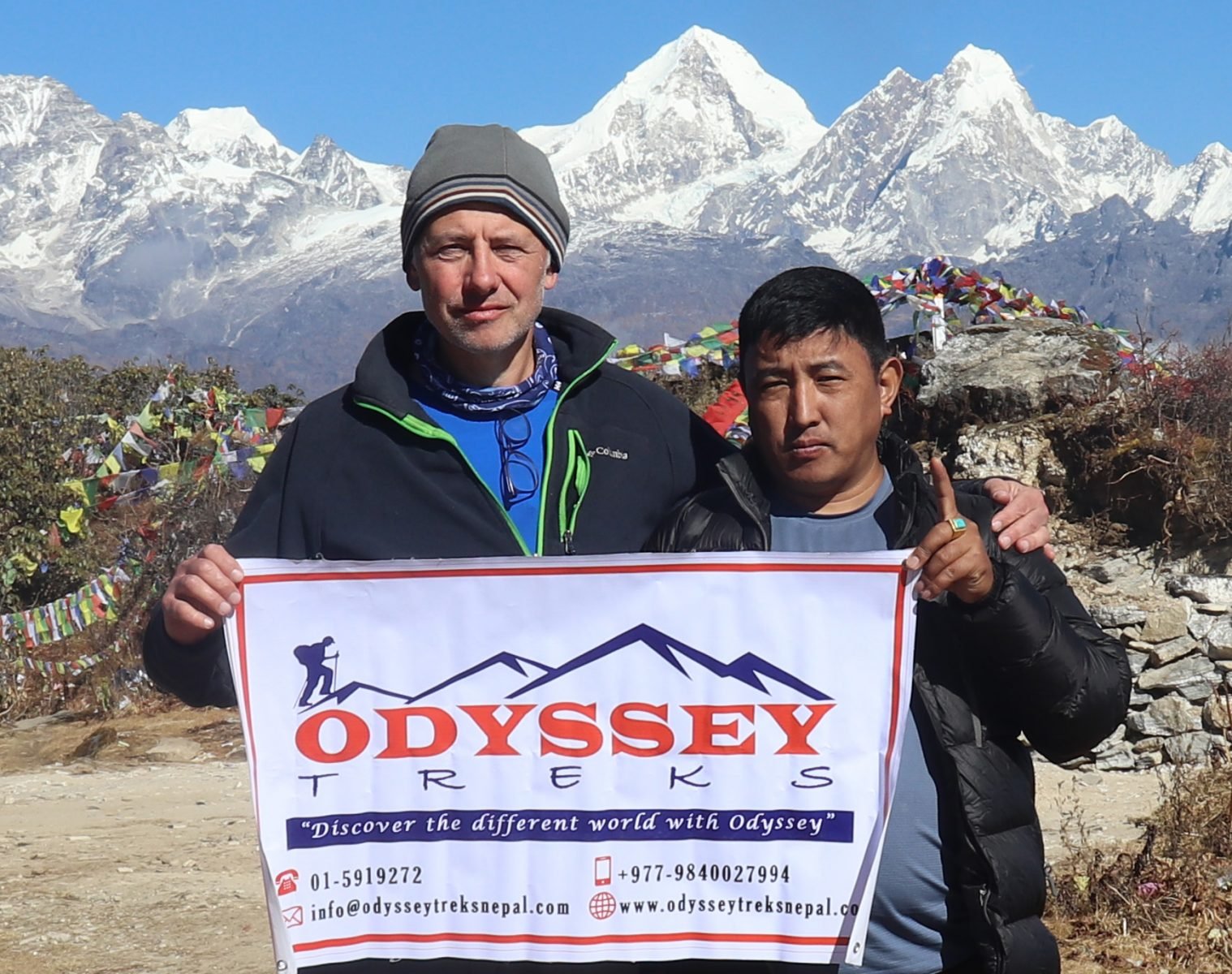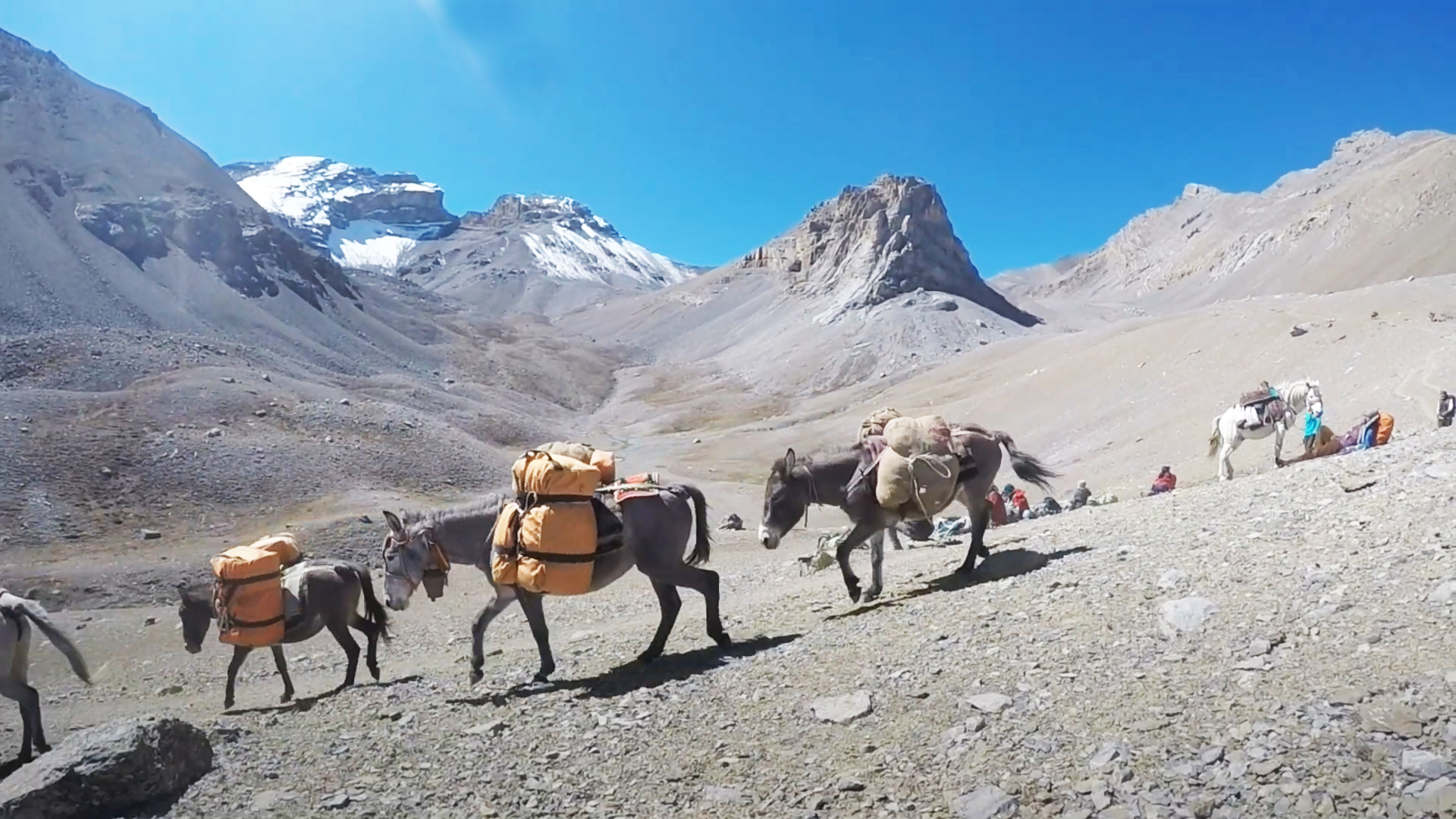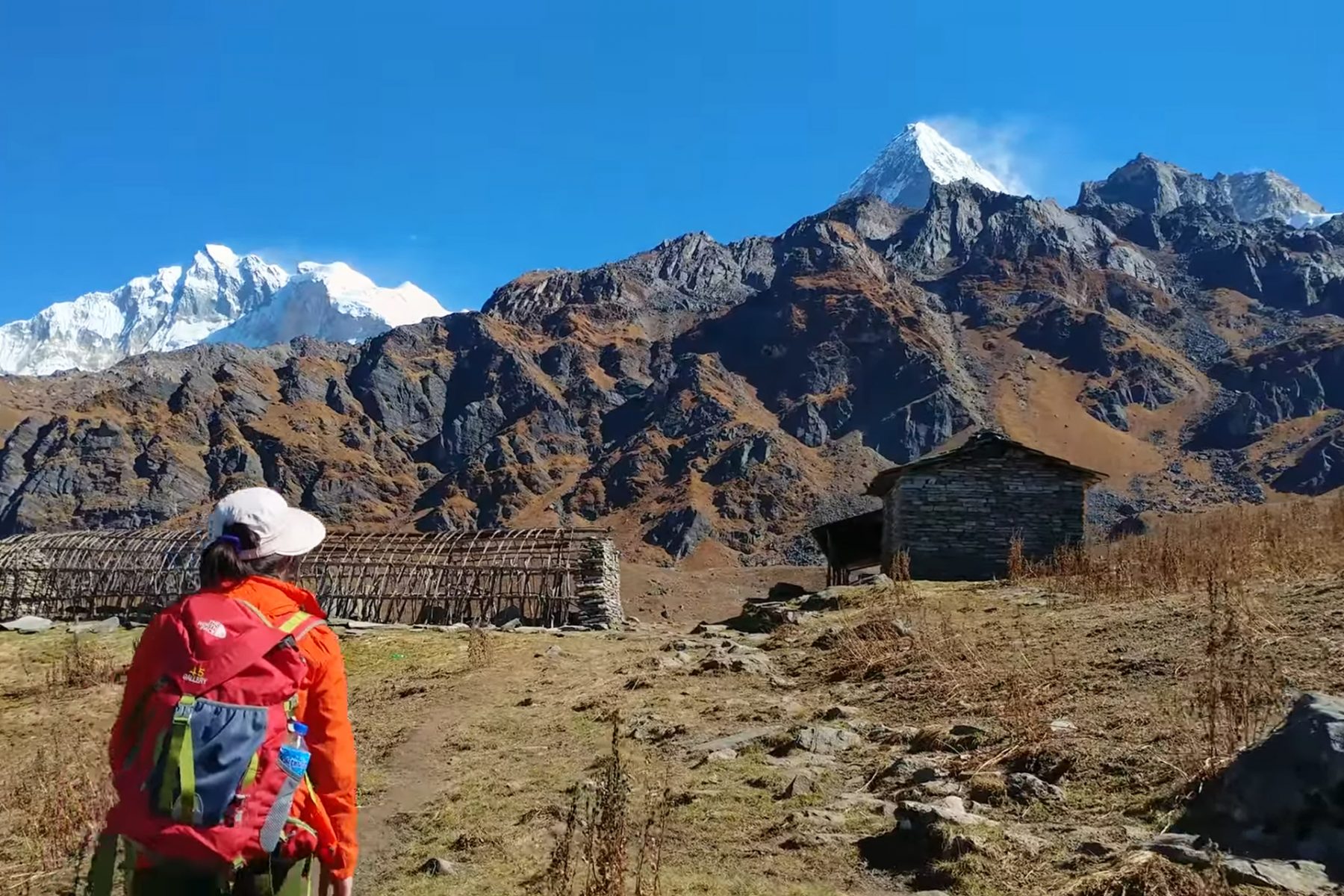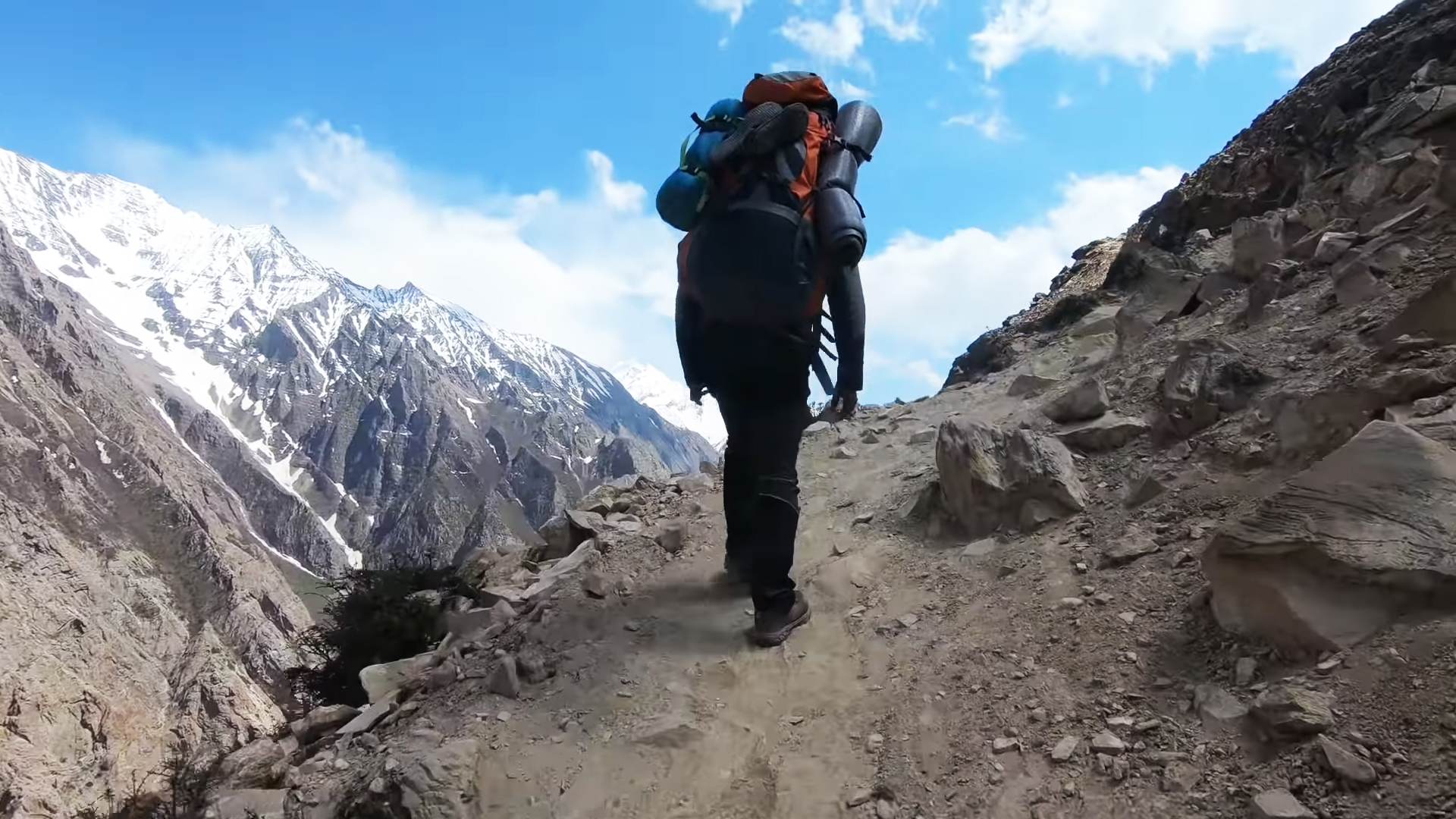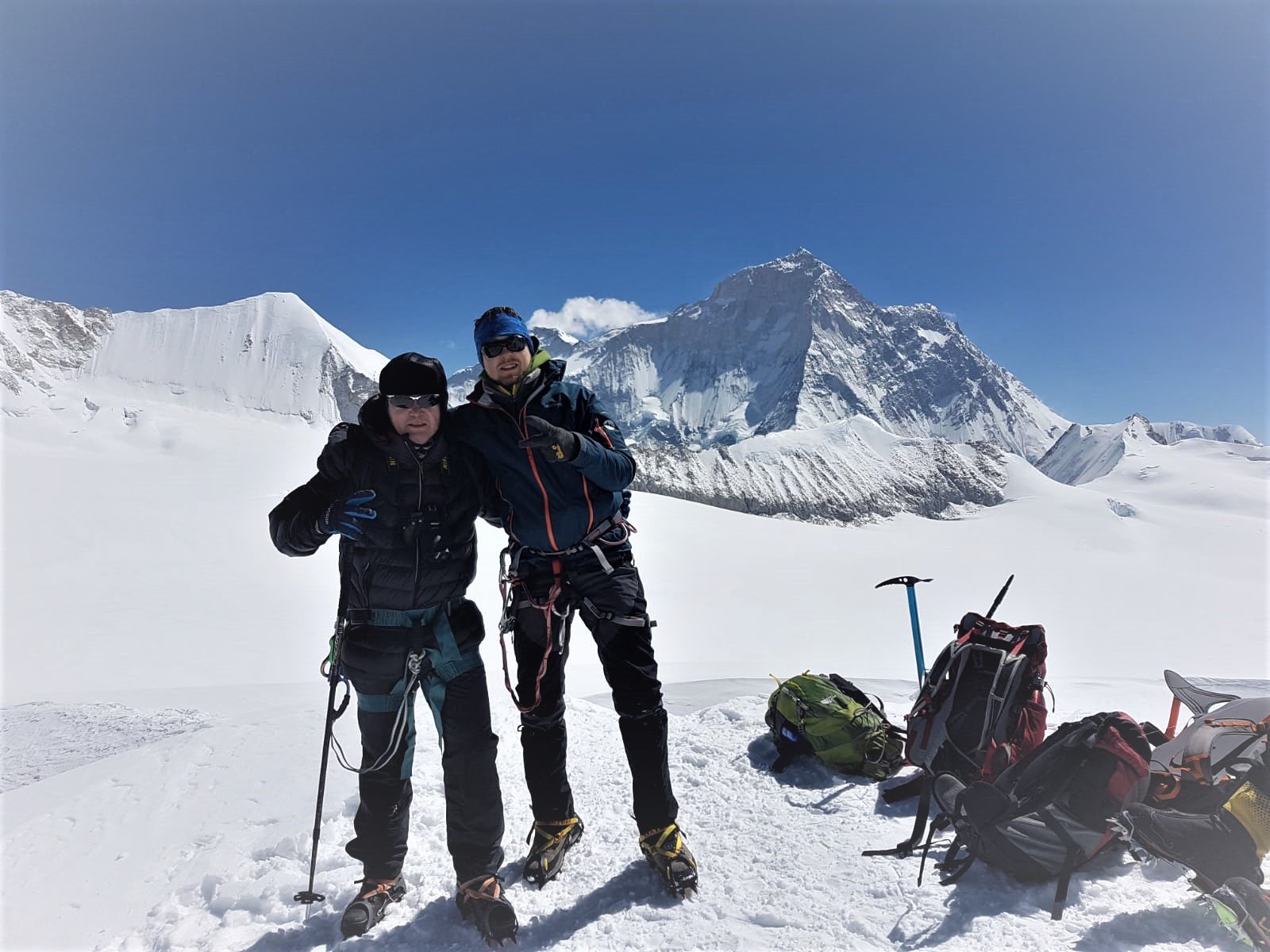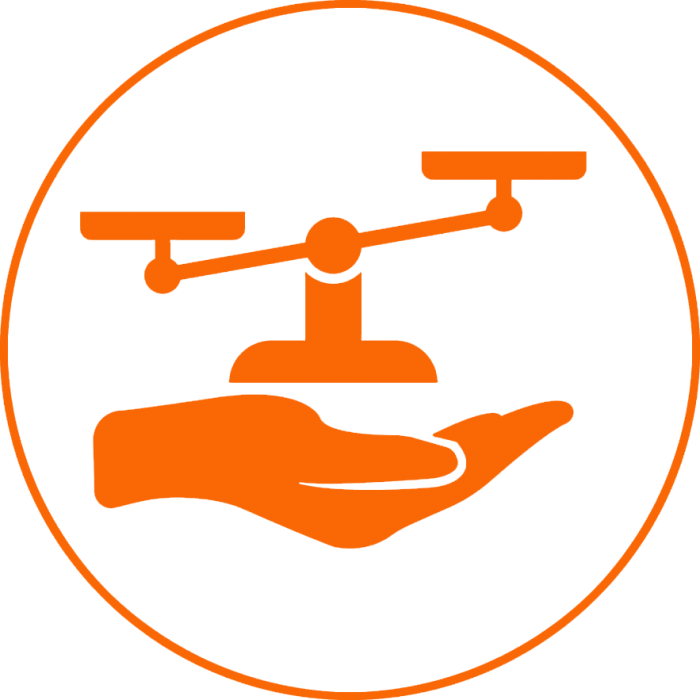Trip Overview
Introduction to Dhaulagiri Trek
Dhaulagiri Trek is an adventurous and challenging trek that passes through beautiful hidden valleys, terraced farmland, rivers and gorges, dense forests, high snow-capped mountain passes, etc. Mount Dhaulagiri is the seventh-highest mountain in the world, with a height of 8,167 meters above sea level.
This trek is also known as the Dhaulagiri Base Camp Trek. Trek offers close-up views of many snow-capped peaks above 8,000 meters and makes every stage breathtaking and exciting.
The Dhaulagiri Trek is challenging to cross the French Pass at 5,360 meters, the Dhampus Pass at 5,200 meters, and the Dhaulagiri Base Camp at 4,740 meters, which requires a high level of fitness. Good physical fitness and the courage to face challenges will take you to magnificent mountains like Tukuche (6,920m), Dhaulagiri I (8,167m), Dhaulagiri II (7,751m), Dhaulagiri III (7,715 m), and Dhaulagiri V (7,618m).
Challenging remote area trek of Nepal
You may visit: The Nepal Buddhist Tour in Just 9 days, Cost, Package, Kathmandu.
This off-the-beaten trail leads to remote areas of the Annapurna region. In this region, people live a simple life far away from modern life. Their lifestyle and unique culture attract the attention of all tourists and make them curious to know more. They have been able to preserve their valuable culture and traditions well over the centuries.
Dhaulagiri Trek is a good trekking trail for all travelers, but due to its remoteness and solitude, only a few travelers trek in this area. Another name for Dhaulagiri Trek is Dhaulagiri Base Camp Trek. This Dhaulagiri Base Camp Trek route with few tourists is a choice for adventurous tourists who do not like to go in crowds and prefer to stay in solitude.
Spring (March to May) and autumn (September to November) are the best times for this trek. However, the trek is possible throughout the year. The weather is usually clear in spring and autumn. Tea houses are available at low altitudes. But one has to camp at higher altitudes as there are no teahouse facilities.
Camping at high altitudes makes this trip a bit more expensive than other normal trip operations. You have to spend 2-3 nights at an altitude above 5,000 meters. So you need to have sufficient and proper trekking equipment.
You may like to visit: The Nepal Cultural Tour in just 12 Days, Itinerary, Cost, Distance, and Culture.
Trip Itinerary
Drive Kathmandu to Beni (850m) - 9 to 10 hours.
Beni to Babiachor (950m) – 5 to 6 hoours walk.
Babiachor to Dharapani (1,400m) – 6 to 7 hours walk.
Dharapani to Muri (1,850m) – 5 to 6 hours walk.
Muri to Boghara (2,080m) – 6 to 7 hours walk.
Boghara to Doban (2,520m) – 5 to 6 hours walk.
Doban to ChoribanKhola (3,110m) – 5 to 6 hours walk.
Choriban Khola to the Italian Base Camp (3,660m) – 7 to 8 hours walk.
Acclimatization day at Italian Base Camp.
Italian Base Camp to Glacier Camp (4,210m) – 6 to 7 hours walk.
Glacier Camp to Dhaulagiri Base Camp (4,740 m) – 7 to 8 hours walk.
Free day at Dhaulagiri Base Camp.
Dhaulagiri Base Camp to Hidden Valley (5,200m) via French Pass (5,360m) – 6 to 7 hours walk.
Hidden Valley to Yak Kharka (3,680m) via Dhampus Pass (5,200m) - 6 to 7 hours walk.
Yak Kharka to Jomsom (2,743m) – 5 to 6 hours walk.
Fly Jomsom to Pokhara – 20 minutes.
Fly Pokhara to Kathmandu - 30 minutes.
Why not list the price?
Each client's needs may be different. The price of the trip varies according to the size of your group and the service you want. The cost of the trip is calculated according to the type of service and accommodation chosen by our customers.
Each trip is customized to fit the client's needs and group size, so the price of each organized trip is different. Please let us know the service you want and the size of the group. We create trips to suit your taste and travel budget per your requirements. Hope you find our price calculation reasonable according to your needs and preferences.
Frequently asked questions about this trip
How difficult is the trek?
The difficulty depends on where and how long you want to trek. The short trek is easy while the long trek requires some physical fitness.
What is altitude sickness?
Altitude sickness is normally known as acute mountain sickness. This can happen when people rapidly climb up to an altitude of more than 3000 meters. We ensure minimal risk by adding rest to our trekking itineraries. Most people will feel some effects of altitude, some shortness of breath and possibly light headache, this is normal enough. Acute mountain sickness patients are quite different and usually have a serious headache, sickness, and lose awareness. In almost all possible cases there are sufficient warning signs to take action properly. Descending to a lower altitude is usually enough to prevent any further problems.
What type of accommodation is available during the trekking?
There are mainly tea houses and lodges available for trekking and they are usually made using local materials and are very comfortable. These accommodations are often family-run and usually provide single and double rooms. The dining room is on the ground floor and is often on fire. All food will be cooked in order in the family kitchen. Toilet facilities are sometimes separate and sometimes outside. Most lodges provide mattresses and blankets. It's a good idea to always have a sleeping bag, which can be useful, and perhaps an inflatable pillow.
How long do we walk every day on trekking?
Trekking programs are classified into three different categories: soft, moderate and hard. Soft treks are only about 7 days to 10 days in duration. They generally do not go above 4000 meters; you can expect to walk about 4-5 hours each day. Moderate treks are challenging enough and long treks that go to the high hill country. Physically exhausting, this involves trekking along the cliffs of the mountains for about 6-8 hours. Harder treks are longer treks that go farther away from the general abode of trekkers and tourists. These physically challenging treks involve walking for 7- 9 hours each day.
How much weight do I need to carry on the trek?
You carry some of your personal belongings, such as warm clothing, water, snacks, sun block, cameras and more. Generally, these items will be lightweight, from 5 to 10kg (10 to 20 pounds). Our porters are available for other heavy goods and for your information one porter would be sharing by two people. The maximum weight carried by one porter is total 20 kg. this means 10 kg. per person is allowed for the trek. In case if you wish to carry more than this weight then you need to hire additional porters.
What is the best time for trekking in Nepal?
October and November are considered as the best times for trekking in Nepal due to dry season. December and January are also considered good times for trekking but it is extremely cold at high altitudes.
Google Reviews
Guest reviews
Thank you a lot for your organization about my trek. It was a superb experience; all was perfect. Karma is a very nice person and a good guide. I appreciated trekking with Odyssey (a reliable Nepal trek operator). If I come back to Nepal, I will be happy to...
Have just returned from my fourth trip to Nepal and as always Odyssey Treks organized everything superbly. We visited Makalu relatively late in the season and were rewarded with empty trails and amazing weather. Karma was as entertaining, friendly, and informative as ever along with Ang Dawa Sherpa who...

